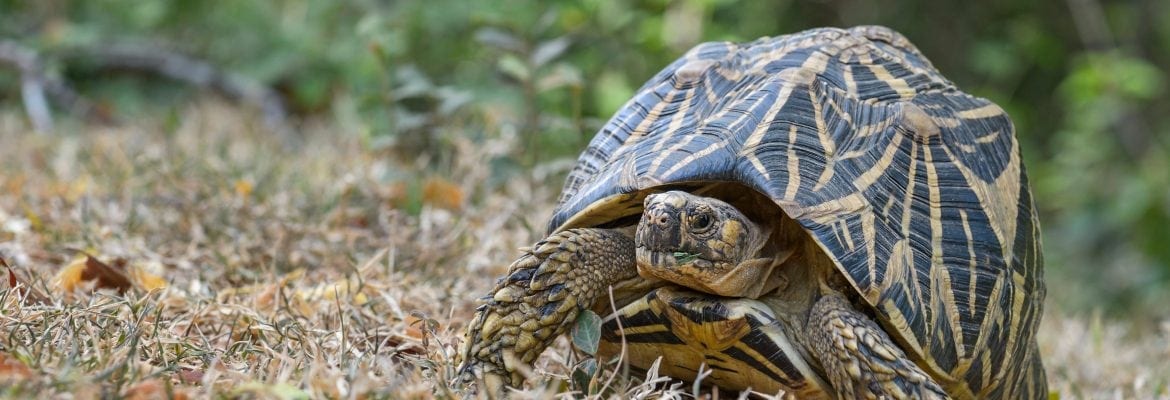
Indian Star Tortoise
Conservation status: IUCN – VU (Vulnerable); CITES – Appendix II
Geographic range: India and Sri Lanka.
Physical description: The pyramid-shaped scutes on the carapace of this animal make it stand out amongst other tortoises. Every scute is yellow in the middle and has lines on the sides making them look like stars. The predominant colour of their carapace varies from brown to black. Usually, females are bigger than males, growing to 25-30 cm long, while males grow to 15-20 cm. These tortoises weigh from 0,4 to 2 kg.
Biology: Their mating season starts during the rainy season, between June and November. The female then lays 1 to 10 eggs in a hole which she then covers up again, using her plastron. The shell of the eggs is quite fragile and porous and they are usually oval but can also be quite round and look like table tennis balls. Incubation lasts from 47 to 180 days and it has been observed that there is a higher proportion of male hatchlings when incubation temperature is lower. The newborn tortoises do not have star markings on their carapaces.
Lifespan: In the wild 35 to 80 years.
Food habits: Grass, leaves, fruit, flowers, can also eat insects and carrion.